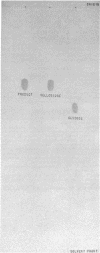Abstract
Thermomonospora curvata produces cellulases active against both cotton fibers (designated C1 activity) and carboxymethylcellulose (Cx activity). In reaction systems employing optimal substrate concentration, pH, and temperature, hydrolysis rates (measured by the release of soluble reducing sugars) were initially linear and decreased on prolonged incubation, although only a small amount of substrate (1 to 2%) had been hydrolyzed. Persistence of this lower rate, even after addition of fresh enzyme (in the C1 assay system), indicated alteration of cellulose susceptibility to hydrolysis rather than enzyme inactivation. Partial purification by (NH4)2SO4 precipitation and exclusion chromatography resolved cellulase activity into two fractions. The sole product of purified cellulase activity on ground cotton fibers appears to be cellobiose.
Full text
PDF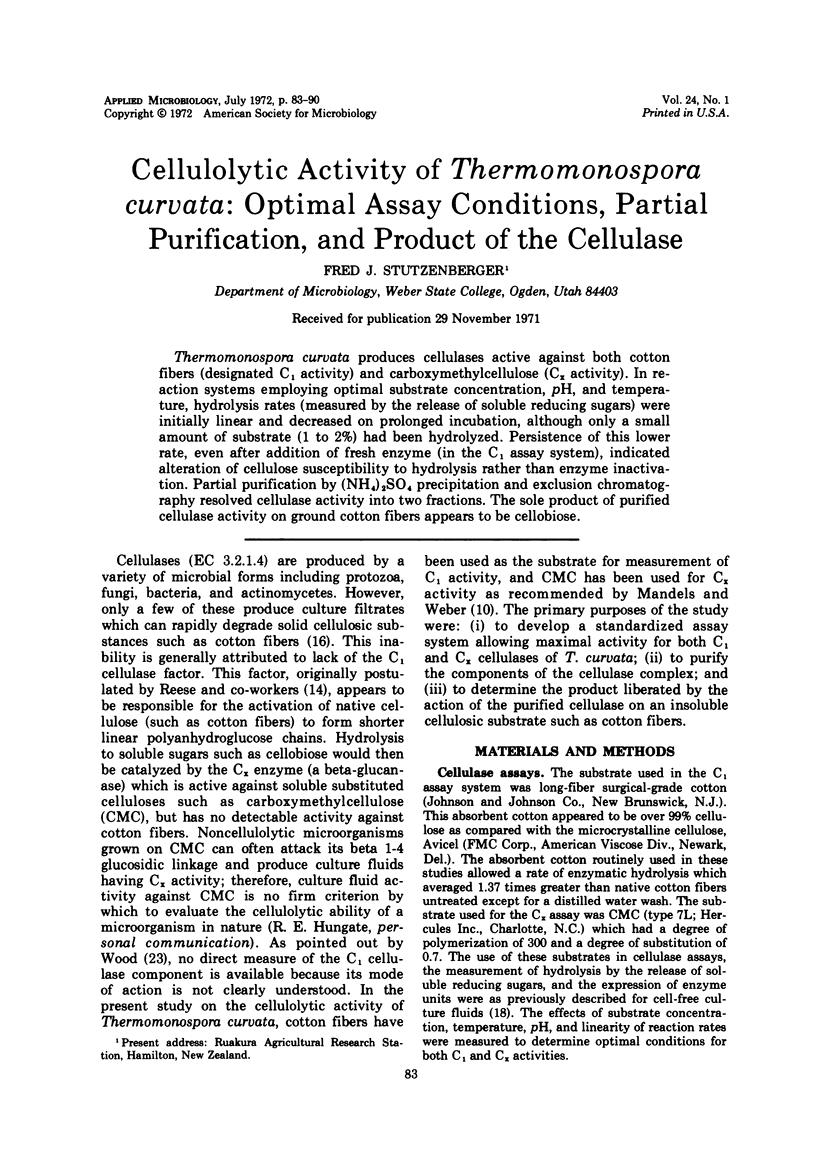

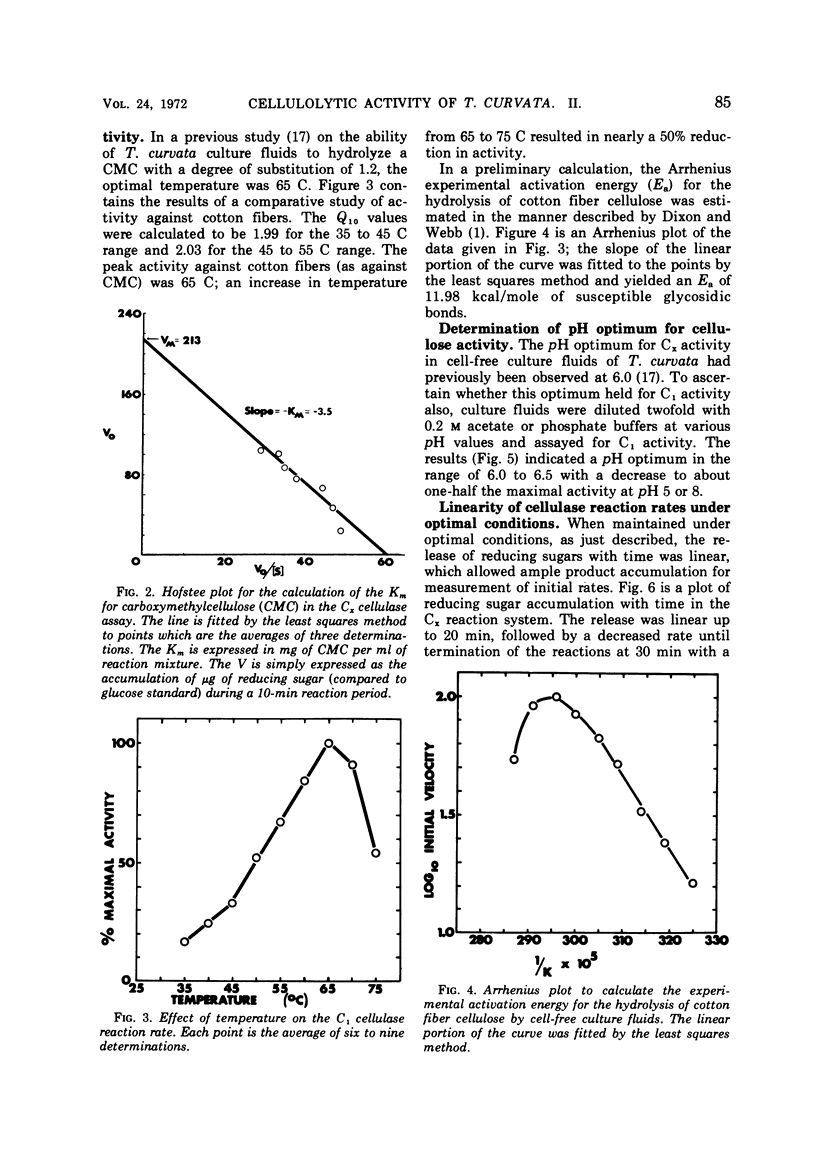
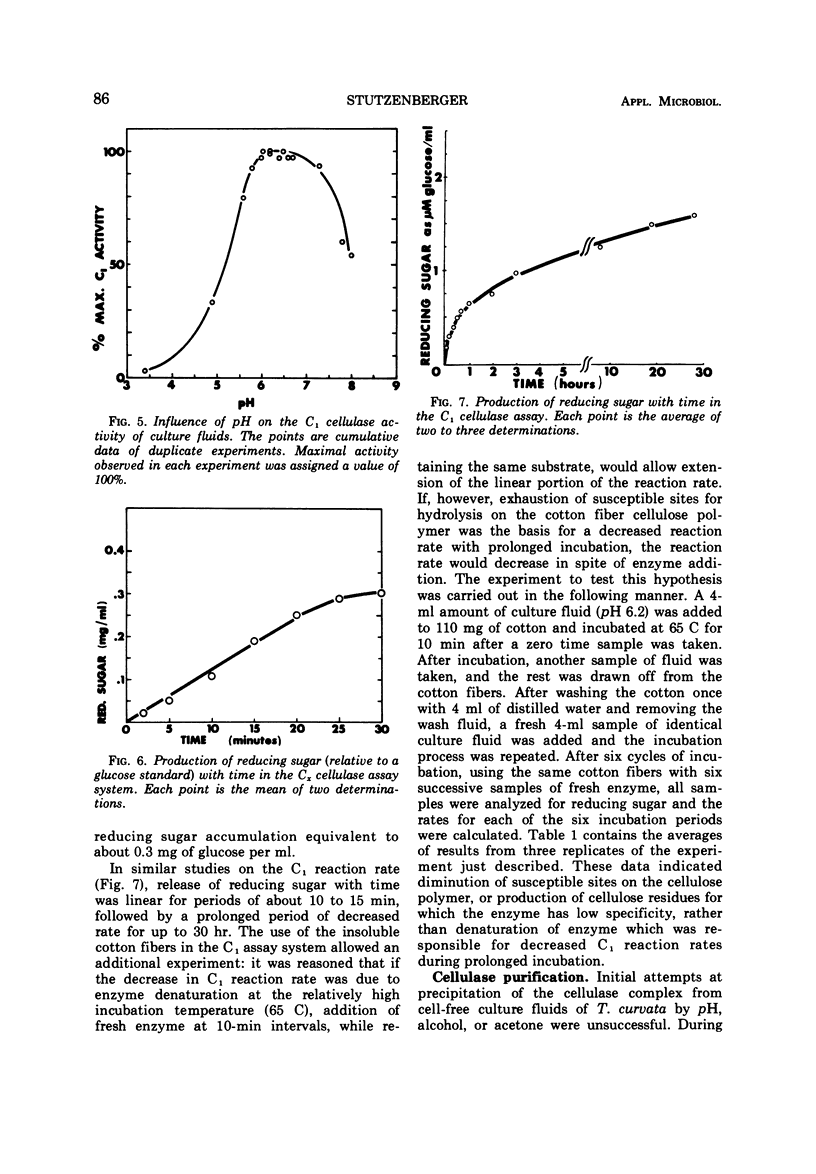

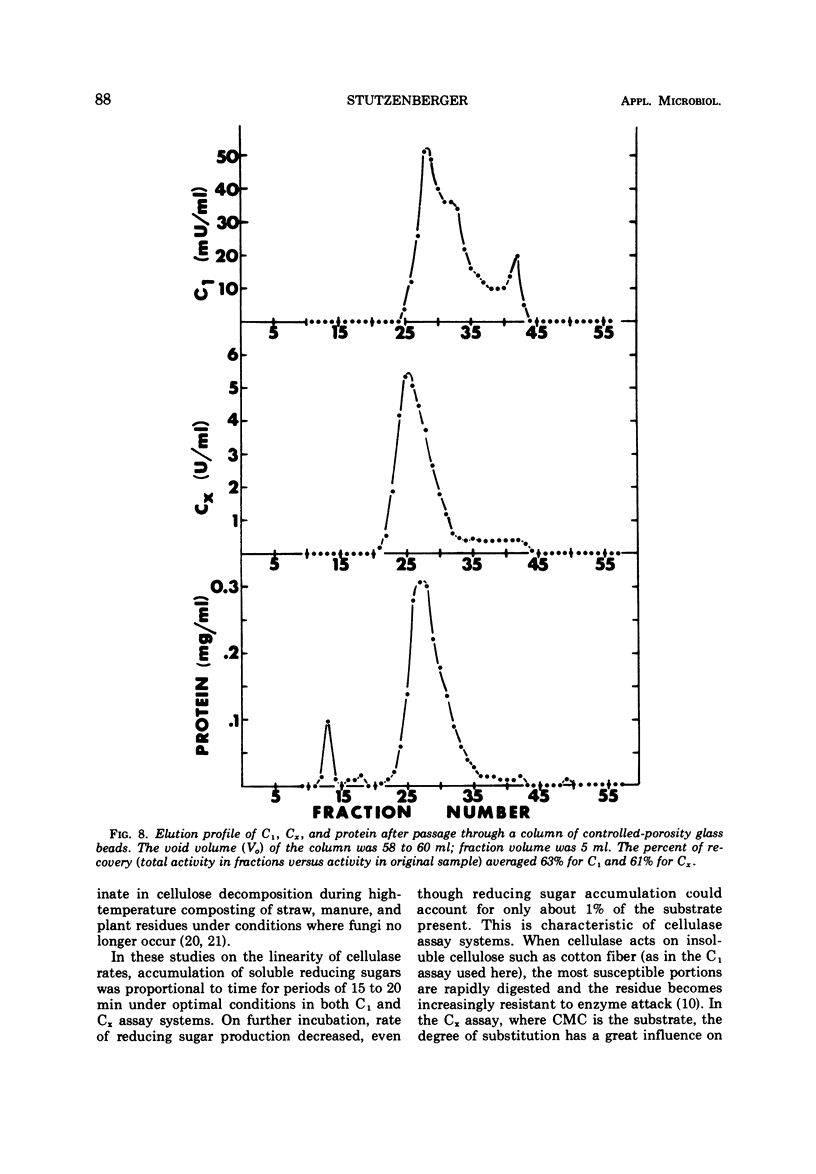
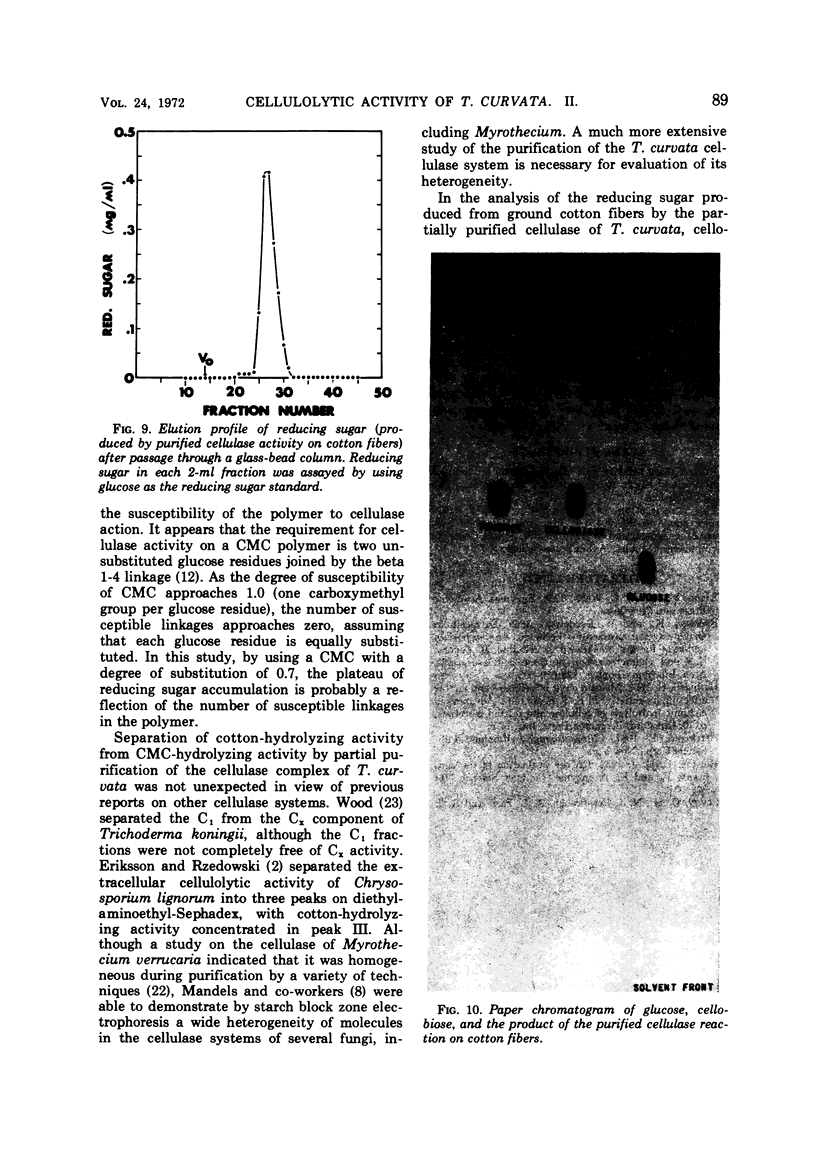
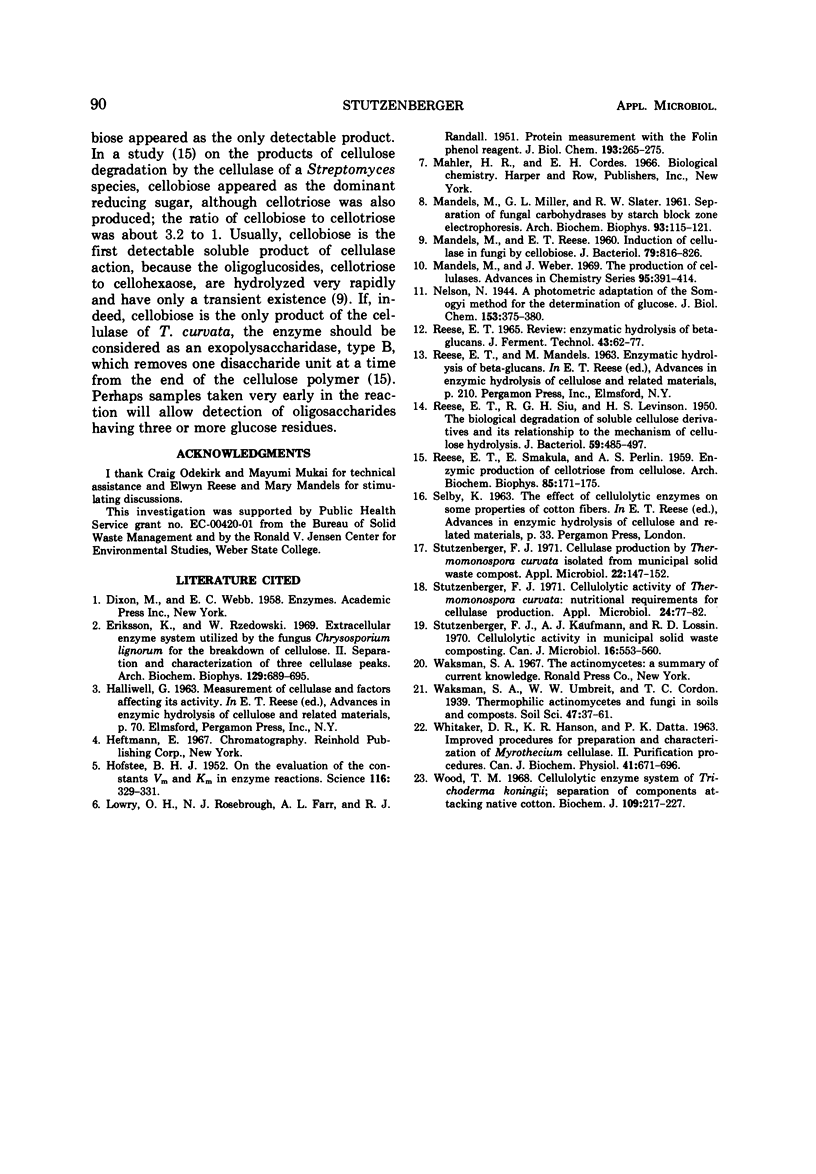
Images in this article
Selected References
These references are in PubMed. This may not be the complete list of references from this article.
- Eriksson K. E., Rzedowski W. Extracellular enzyme system utilized by the fungus Chrysosporium lignorum for the breakdown of cellulose. II. Separation and characterization of three cellulase peaks. Arch Biochem Biophys. 1969 Feb;129(2):689–695. doi: 10.1016/0003-9861(69)90229-x. [DOI] [PubMed] [Google Scholar]
- HOFSTEE B. H. J. On the evaluation of the constants Vm and KM in enzyme reactions. Science. 1952 Sep 26;116(3013):329–331. doi: 10.1126/science.116.3013.329. [DOI] [PubMed] [Google Scholar]
- LOWRY O. H., ROSEBROUGH N. J., FARR A. L., RANDALL R. J. Protein measurement with the Folin phenol reagent. J Biol Chem. 1951 Nov;193(1):265–275. [PubMed] [Google Scholar]
- MANDELS M., MILLER G. L., SLATER R. W., Jr Separation of fungal carbohydrases by starch blockzone electrophoresis. Arch Biochem Biophys. 1961 Apr;93:115–121. doi: 10.1016/0003-9861(61)90322-8. [DOI] [PubMed] [Google Scholar]
- MANDELS M., REESE E. T. Induction of cellulase in fungi by cellobiose. J Bacteriol. 1960 Jun;79:816–826. doi: 10.1128/jb.79.6.816-826.1960. [DOI] [PMC free article] [PubMed] [Google Scholar]
- REESE E. T., SIU R. G. H., LEVINSON H. S. The biological degradation of soluble cellulose derivatives and its relationship to the mechanism of cellulose hydrolysis. J Bacteriol. 1950 Apr;59(4):485–497. doi: 10.1128/jb.59.4.485-497.1950. [DOI] [PMC free article] [PubMed] [Google Scholar]
- REESE E. T., SMAKULA E., PERLIN A. S. Enzymic production of cellotriose from cellulose. Arch Biochem Biophys. 1959 Nov;85:171–175. doi: 10.1016/0003-9861(59)90460-6. [DOI] [PubMed] [Google Scholar]
- Stutzenberger F. J. Cellulase production by Thermomonospora curvata isolated from municipal solid waste compost. Appl Microbiol. 1971 Aug;22(2):147–152. doi: 10.1128/am.22.2.147-152.1971. [DOI] [PMC free article] [PubMed] [Google Scholar]
- Stutzenberger F. J. Cellulolytic activity of Thermomonospora curvata: nutritional requirments for cellulase production. Appl Microbiol. 1972 Jul;24(1):77–82. doi: 10.1128/am.24.1.77-82.1972. [DOI] [PMC free article] [PubMed] [Google Scholar]
- Stutzenberger F. J., Kaufman A. J., Lossin R. D. Cellulolytic activity in municipal solid waste composting. Can J Microbiol. 1970 Jul;16(7):553–560. doi: 10.1139/m70-093. [DOI] [PubMed] [Google Scholar]
- WHITAKER D. R., HANSON K. R., DATTA P. K. Improved procedures for preparation and characterization of myrothecium cellulase. 2. Purification procedures. Can J Biochem Physiol. 1963 Mar;41:671–696. [PubMed] [Google Scholar]
- Wood T. M. Cellulolytic enzyme system of Trichoderma koningii. Separation of components attacking native cotton. Biochem J. 1968 Sep;109(2):217–227. doi: 10.1042/bj1090217. [DOI] [PMC free article] [PubMed] [Google Scholar]



